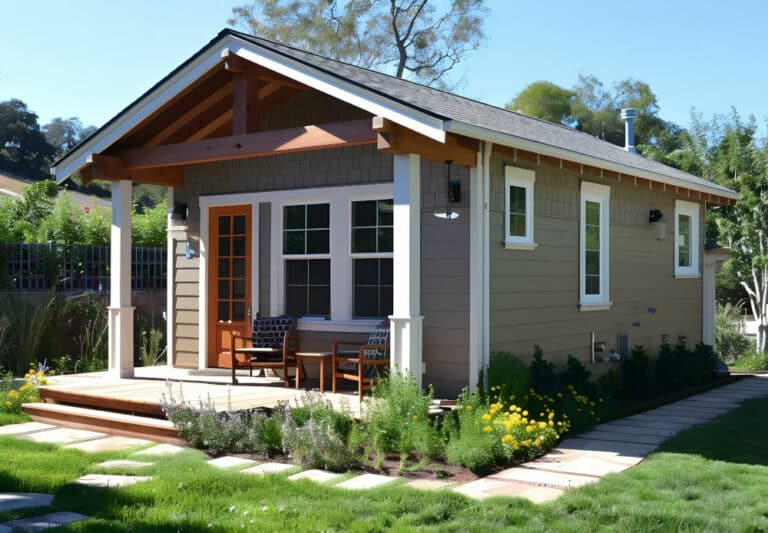Introduction
Accessory Dwelling Units (ADUs) are gaining popularity among homeowners in Phoenix as an effective way to maximize property potential. Whether you’re considering an attached mother-in-law suite or a detached casita, choosing the right type of ADU is crucial. This blog will compare the advantages and disadvantages of attached and detached ADUs to help you make an informed decision for your home.
Understanding Attached ADUs
Attached ADUs are secondary living units that are physically connected to the main residence. They often share one or more walls with the primary dwelling and can be accessed directly from the main house or through a separate entrance. Common uses for attached ADUs include mother-in-law suites, home offices, and guest rooms. The construction process typically involves integrating the new living space with the existing structure, making use of shared utilities and infrastructure.
Advantages of Attached ADUs
- Cost-effectiveness: Attached ADUs are generally less expensive to build than detached units because they share walls, utilities, and infrastructure with the main residence.
- Easier permitting and zoning processes: Since attached ADUs are considered part of the primary residence, the permitting and zoning requirements are often simpler and more straightforward.
- Convenience: The proximity to the main residence makes it easier to care for family members or access the ADU for personal use.
- Enhanced property value: Adding an attached ADU increases the usable space within the existing footprint of the home, which can enhance property value.
Disadvantages of Attached ADUs
- Privacy concerns: Attached ADUs offer less separation between the primary residence and the ADU occupants, which can be a drawback for those seeking privacy.
- Potential limitations on design and layout: The need to integrate with the existing structure may limit design options and flexibility.
- Noise and disturbance issues: Noise can easily travel between the attached units, potentially causing disturbances for both the main residence and the ADU occupants.
Understanding Detached ADUs
Detached ADUs are standalone structures located on the same property as the main residence. They provide a completely separate living space, often with their own utilities and infrastructure. Common uses for detached ADUs include guest houses, rental units, and independent living spaces for extended family. The construction process involves building a new structure on the property, which can be placed in various locations depending on the available space and layout.
Advantages of Detached ADUs
- Enhanced privacy and independence: Detached ADUs offer a greater level of privacy and independence for the occupants, making them ideal for long-term guests or tenants.
- Greater design flexibility: Detached units provide more opportunities for customization and design, allowing for unique and personalized living spaces.
- Higher rental income potential: The increased privacy and desirability of detached ADUs can attract higher rental income compared to attached units.
- Separate living environment: Detached ADUs create a distinct and separate living environment, which can be beneficial for extended family members or tenants.
Disadvantages of Detached ADUs
- Higher construction costs: Building a detached ADU is generally more expensive than an attached unit due to the need for separate infrastructure and utilities.
- More complex permitting and zoning processes: Detached ADUs often require more extensive permitting and zoning approvals, which can add time and complexity to the project.
- Increased maintenance and landscaping requirements: Maintaining a separate structure and its surroundings can be more demanding in terms of time and resources.
- Placement restrictions: The size and layout of your property may limit where a detached ADU can be built, potentially restricting your options.
Factors to Consider When Choosing Between Attached and Detached ADUs
- Property size and layout: Assess the available space on your property and determine where an ADU can be placed.
- Intended use: Consider the primary purpose of the ADU, such as rental income, housing family members, or a home office.
- Budget: Evaluate your financial constraints and the potential return on investment for each type of ADU.
- Privacy needs: Determine the importance of privacy for both the ADU occupants and the primary residents.
- Long-term plans: Think about the future uses and flexibility of the ADU to ensure it meets your long-term goals.
Conclusion
Choosing between an attached and a detached ADU depends on your specific needs, property characteristics, and long-term plans. Attached ADUs offer cost-effective, convenient solutions with easier permitting processes, while detached ADUs provide enhanced privacy, design flexibility, and higher rental income potential. It’s essential to consider these factors and consult with a professional ADU builder to explore your options and make the best decision for your Phoenix home.
Ready to explore the possibilities of building an ADU on your property? Contact NextADU for a consultation and personalized advice on ADU options. Visit our website or call us to request an estimate and learn more about how we can help you bring your vision to life.




